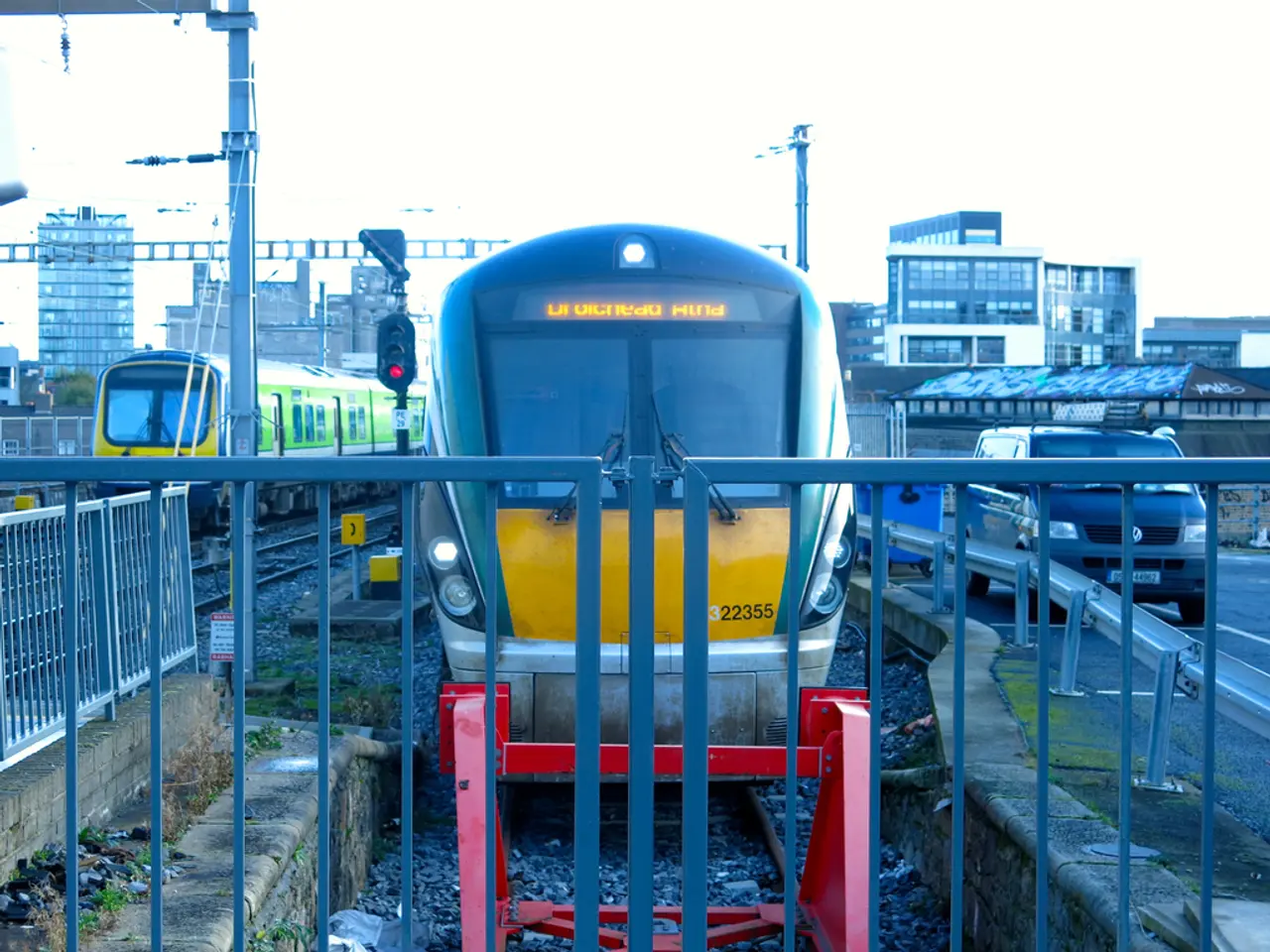Testing of recent UTRAM models in Ekaterinburg
In the heart of Russia, the city of Yekaterinburg is set to revolutionise its public transportation system with the introduction of a new range of trams, including the first family of low-floor trams with autonomous driving capability in the country.
The city administration's press service has announced that the second tram is planned to connect the centre of Yekaterinburg with the Academic microdistrict. This new tram, designed with an autonomous drive option, is expected to reduce project costs as it does not require power stations or traction networks.
The 71-233, the first autonomous low-floor tram prototype, was developed by Sinara – Transport Machines (STM) and unveiled in 2025. This three-car low-floor tram prototype represents a clean-sheet design with an all-steel welded load-bearing frame and composite materials, aiming to meet modern international standards and the specific needs of Russian cities.
The city's 2014 budget included funds for the design of a tram line connecting the centre and the Academic microdistrict, paving the way for the new trams' arrival. However, only 10 ordinary trams will be bought for Yekaterinburg in the next year.
The production of these new trams is a significant step towards Yekaterinburg's goal of becoming the centre of Russian tram production. The region's enterprise, OAO "Uraltransmash", plans to create a model range of low-floor trams with an innovative autonomous energy system.
The production of trams with an automatic drive option will only be done on order. The city's authorities hope these innovations will be in demand in other regions of the country, contributing to the expansion of STM’s footprint in the urban public transport sector.
According to Sverdlovsk Minister of Industry and Science, Vladislav Pinaev, one of the largest tram producers in Russia is operating in the Sverdlovsk region. Pinaev notes that while there may be Western analogues that are better, these trams offer a good balance of price and quality for Russian reality.
Serial production preparations for the 71-233 started in 2024 in Ekaterinburg, but no exact cost figures were disclosed. Testing and certification phases for similar transport projects are expected to be completed within about two years, suggesting that full deployment could happen around 2026-2027.
The potential impact of this tram model extends beyond Yekaterinburg. With government and regional support for domestic transport engineering projects, there is strong potential for adoption in other Russian cities. The tram design is based on experience from Russian cities and aims to improve urban mobility with modern, possibly autonomous, trams.
As for the future, no explicit details were available on the full autonomous functions or specific autonomous trial deployments. However, given the Russian government's interest in autonomous transport trials, autonomous capabilities may be part of future development steps.
References: 1. STM unveils Russia's first autonomous low-floor tram prototype 2. STM to Expand Footprint in Urban Public Transport Sector 3. Uraltransmash to Produce 80 New-Model Trams in 2014 4. Yekaterinburg Aims to Become Russian Tram Production Centre 5. Autonomous Trams Trialled in Russia
- The second autonomous tram, connecting Yekaterinburg's center with the Academic microdistrict, is planned under the city's transportation revolution, demonstrating the industry's commitment to modern public-transit solutions.
- The production of these innovative low-floor trams, such as the 71-233, is a crucial step in Yekaterinburg's strategy to establish itself as a significant player in the automotive and technology sectors of Russian tram manufacturing.
- In line with the Russian government's focus on autonomous transport trials, the potential for future development of autonomous functions in these trams is compelling, which could redefine the landscape of urban transportation in the country.
- With the significant financial backing from the city's budget and regional entities, technology-driven advancements in the finance industry have enabled the growth and expansion of domestic transport engineering projects like the production of autonomous trams.




